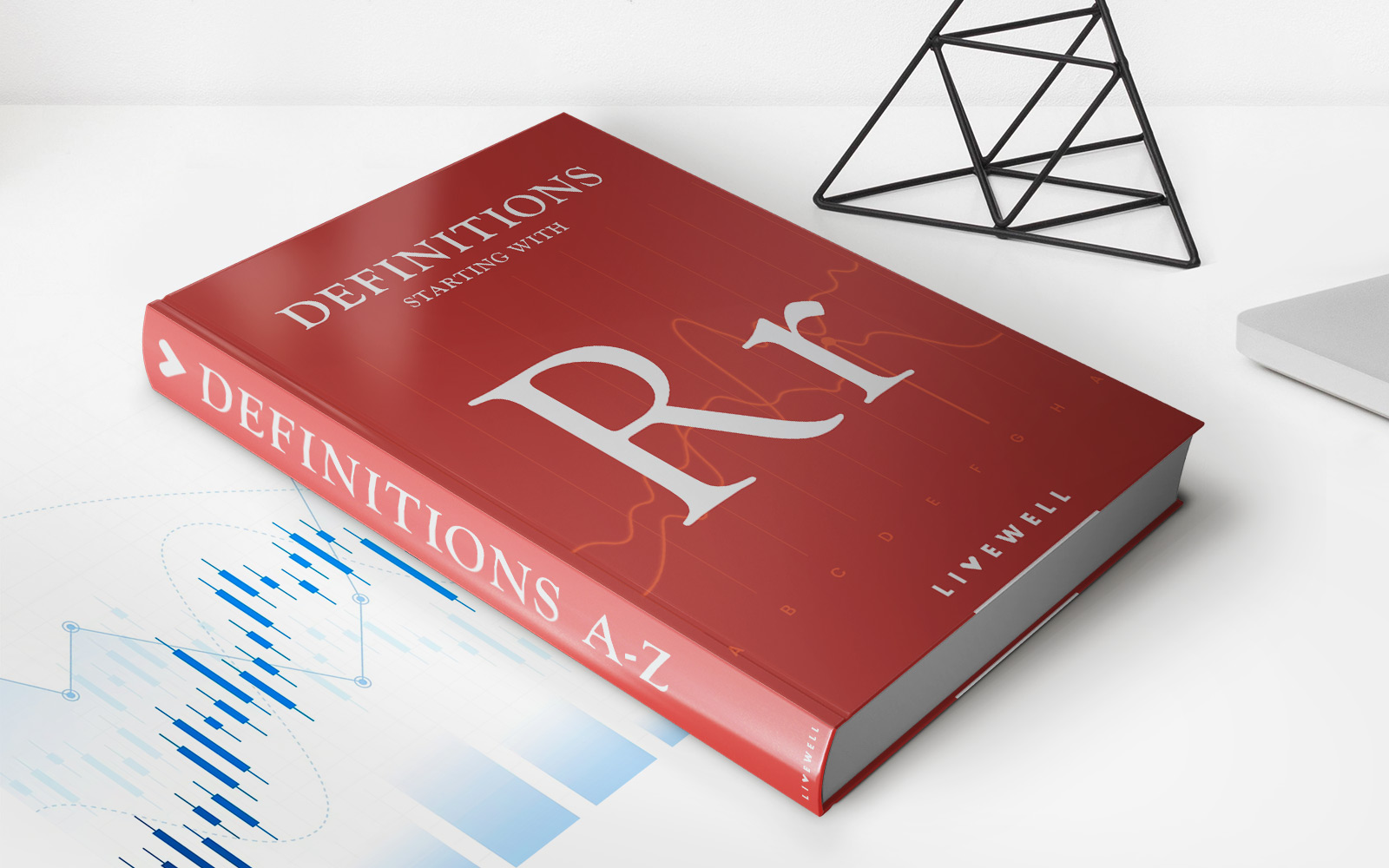

Finance
What Is Federal Banking Regulation D?
Modified: December 30, 2023
Federal Banking Regulation D is a key aspect of the finance industry, governing reserve requirements for banks and providing guidelines for transactions and withdrawals. Find out more about its impact on the financial sector.
(Many of the links in this article redirect to a specific reviewed product. Your purchase of these products through affiliate links helps to generate commission for LiveWell, at no extra cost. Learn more)
Table of Contents
Introduction
Federal Banking Regulation D is a crucial component of the United States banking system. Implemented by the Federal Reserve System, Regulation D aims to establish reserve requirements and transaction limitations for financial institutions. The regulation plays a fundamental role in ensuring the stability and functionality of the banking sector.
With the enactment of Regulation D, the Federal Reserve seeks to control the money supply in the economy and regulate the availability of funds for lending and investment purposes. By setting reserve requirements for banks, the regulation aims to maintain a balance between the financial institution’s ability to meet customer demands and the stability of the banking system as a whole.
This article will delve into the purpose and mechanisms of Federal Banking Regulation D, as well as explore its specific requirements and exceptions. Whether you are a banking professional, an entrepreneur, or a curious individual seeking a deeper understanding of finance, this article will provide you with valuable insights into this vital aspect of our financial system.
Purpose of Federal Banking Regulation D
The primary purpose of Federal Banking Regulation D is to maintain the stability and soundness of the banking system by controlling the money supply and ensuring that financial institutions have sufficient reserves to meet customer demands. The regulation achieves this by establishing reserve requirements and transaction limitations for banks.
One of the main objectives of Regulation D is to control the money supply in the economy. By requiring banks to hold reserves, the Federal Reserve can influence the amount of money available for lending and investing. Through this mechanism, the central bank can manage inflation and stimulate or slow down economic growth as necessary.
Another purpose of Regulation D is to regulate the availability of funds for banks to lend. By setting reserve requirements, the regulation aims to ensure that banks have enough liquid assets to cover their deposit liabilities. This helps mitigate the risk of bank runs and ensures that financial institutions remain solvent even during periods of economic instability.
Additionally, Regulation D plays a crucial role in promoting financial system stability. By mandating reserve requirements for banks, the regulation helps prevent excessive expansion of credit and the buildup of systemic risk. It serves as a safeguard against liquidity crises and reinforces public confidence in the banking sector.
Furthermore, Regulation D serves as a tool for the Federal Reserve to implement monetary policy. By adjusting reserve requirements, the central bank can impact the cost of borrowing and influence interest rates. This allows the Federal Reserve to control inflation, promote economic stability, and react to changing economic conditions.
In summary, the purpose of Federal Banking Regulation D is to maintain monetary stability, regulate the availability of funds for lending, promote financial system stability, and provide a mechanism for implementing monetary policy. By fulfilling these objectives, Regulation D plays a vital role in the functioning of the U.S. banking system and contributes to the overall health of the economy.
How Federal Banking Regulation D Works
Federal Banking Regulation D utilizes two primary mechanisms to regulate the activities of financial institutions: reserve requirements and transaction limitations.
Reserve requirements refer to the amount of funds that banks must hold in reserve against certain types of deposits. These reserves serve as a protective buffer to ensure that banks can meet their customers’ withdrawal requests and maintain solvency. The Federal Reserve sets reserve requirements as a percentage of a bank’s qualifying liabilities.
Under Regulation D, banks are required to maintain reserves in the form of vault cash or deposits held at Federal Reserve Banks. The amount of reserves a bank must hold is determined by its total transaction accounts, which include checking accounts and certain types of savings accounts. By adjusting the reserve requirements, the Federal Reserve can influence the lending capacity of banks and control the money supply in the economy.
Transaction limitations are another key aspect of Regulation D. The regulation imposes restrictions on the number of certain types of withdrawals or transfers that customers can make from their savings and money market deposit accounts per month. The purpose of these limitations is to encourage savers to maintain their funds in longer-term accounts that are less liquid and stimulate more stable saving habits.
Under Regulation D, banks are required to categorize accounts as either transaction accounts or non-transaction accounts. Transaction accounts are subject to the transaction limitations, whereas non-transaction accounts, such as time deposits or certificates of deposit, are exempt from these restrictions. The specific transaction limitations include limits on preauthorized transfers, automatic transfers, and telephone or electronic transfers.
It’s worth noting that financial institutions are required to provide clear and comprehensive disclosure to their customers regarding the transaction limitations on their accounts. This ensures that customers are fully aware of the restrictions and can make informed decisions about managing their funds.
In summary, Federal Banking Regulation D operates through establishing reserve requirements that banks must hold against certain deposits and imposing transaction limitations on specific types of accounts. These measures provide stability to the banking system, regulate the availability of funds for lending, and influence the money supply. By implementing these mechanisms, Regulation D helps maintain the soundness and functionality of financial institutions and contributes to the overall stability of the economy.
Reserve Requirements
Reserve requirements are a critical component of Federal Banking Regulation D. They refer to the amount of funds that banks are mandated to hold in reserve against certain deposits in order to maintain liquidity and stability within the banking system.
The Federal Reserve sets reserve requirements as a percentage of a bank’s transaction accounts, which include checking accounts, NOW (Negotiable Order of Withdrawal) accounts, and some types of savings accounts. The specific reserve requirement percentages are determined by the size of the bank’s deposit base.
For example, as of 2021, the reserve requirement for banks with more than $17.1 million in net transaction accounts is set at 10% on amounts above the minimum reserve amount (known as the reserve requirement exemption amount). Banks with less than $17.1 million in net transaction accounts are exempt from reserve requirements.
Banks have the flexibility to meet reserve requirements using either vault cash, which refers to physical currency and coins held on premises, or by maintaining deposits at Federal Reserve Banks. The reserve balances held at Federal Reserve Banks can earn interest for the banks, known as “earnings credits,” which can offset some of the costs associated with meeting reserve requirements.
It is important to note that the Federal Reserve has the authority to adjust reserve requirements as a means to implement monetary policy and regulate the availability of funds for lending. By increasing or decreasing reserve requirements, the central bank can influence the amount of money that banks have available to lend, thereby affecting interest rates and overall economic conditions.
Financial institutions are required to calculate and report their reserve requirements on a weekly basis. The Federal Reserve monitors compliance and enforces penalties for banks that fail to meet their required reserves.
By establishing reserve requirements, Federal Banking Regulation D aims to ensure that banks maintain adequate levels of liquidity to meet the demands of depositors and prevent insolvency. This enhances confidence in the banking system and helps to maintain stability in the overall economy.
Transaction Limitations
Federal Banking Regulation D imposes transaction limitations on certain types of accounts to promote stability in the banking system and encourage savers to maintain funds in longer-term accounts. These limitations restrict the number of withdrawals or transfers that customers can make from specific accounts within a given time period.
Under Regulation D, transaction accounts subject to limitations include regular savings accounts, money market deposit accounts, and certain types of electronic transfer accounts. These accounts are considered to have a high degree of liquidity, and the transaction limitations are intended to discourage excessive withdrawals and promote more stable saving habits.
The specific transaction limitations include restrictions on preauthorized transfers, automatic transfers, and telephone or electronic transfers from these accounts. As of 2021, the regulation allows for up to six withdrawals or transfers per month from these accounts. If a customer exceeds this limit, financial institutions may charge a fee or convert the account to a non-transaction account.
It’s important for customers to be aware of these transaction limitations and consider their savings goals and needs when choosing the type of account to hold their funds. Non-transaction accounts, such as time deposits or certificates of deposit, are exempt from these restrictions and can offer higher interest rates in return for longer-term commitments.
Financial institutions are responsible for informing their customers about the transaction limitations on their accounts through clear and comprehensive disclosure. This ensures that customers are aware of the restrictions and can manage their funds accordingly.
It’s worth noting that certain types of transactions are exempt from the limitations imposed by Regulation D. These include withdrawals or transfers made in person at a bank branch, withdrawals requested by mail, or transactions made via an ATM. Additionally, transfers made between accounts within the same financial institution are also exempt.
By imposing transaction limitations, Federal Regulation D aims to promote stability within the banking system by encouraging savers to keep their funds in longer-term accounts. This helps ensure that financial institutions have a stable funding base and reduces the risk of liquidity shortages during times of economic stress.
Penalties for Violating Regulation D
Compliance with Federal Banking Regulation D is crucial for financial institutions, as violations can result in penalties and regulatory actions. The penalties for violating Regulation D can vary depending on the severity and frequency of the violations. The Federal Reserve, as the regulatory authority responsible for enforcing Regulation D, has the power to impose penalties and take disciplinary action against non-compliant banks.
One of the most common penalties for violating Regulation D is the assessment of monetary fines. Financial institutions that consistently fail to meet their reserve requirements or exceed the transaction limitations may be subject to monetary penalties. The specific amount of the fines can vary based on factors such as the size of the institution, the severity of the violation, and the institution’s compliance history.
In addition to monetary fines, the Federal Reserve can take further regulatory actions against non-compliant banks. These actions may include issuing cease and desist orders, which require banks to immediately rectify the violations and come into compliance with Regulation D. The Federal Reserve can also impose restrictions on the bank’s activities, limit its expansion or growth, or even initiate legal proceedings if necessary.
Repeated or significant violations of Regulation D can lead to more severe consequences for financial institutions. In extreme cases, the Federal Reserve may revoke the bank’s charter or take the institution into receivership, effectively closing it down. These measures are taken to safeguard the stability of the banking system and protect the interests of depositors and the wider economy.
It’s important for banks and financial institutions to maintain a strong compliance program to ensure adherence to the requirements of Regulation D. This includes regular monitoring of reserve positions and transaction activities, as well as comprehensive internal controls and reporting mechanisms. By prioritizing compliance, financial institutions can avoid penalties and maintain a positive reputation within the banking industry.
Overall, the penalties for violating Federal Banking Regulation D can have significant consequences for financial institutions. Monetary fines, regulatory actions, and potential closures can all result from non-compliance with reserve requirements and transaction limitations. Strict adherence to the regulations is essential to maintain the stability and integrity of the banking system.
Exceptions to Regulation D
While Federal Banking Regulation D sets the guidelines and requirements for reserve balances and transaction limitations, there are exceptions to the regulation that provide flexibility for certain types of transactions and accounts.
One common exception to Regulation D is the exemption of certain types of accounts from transaction limitations. For example, accounts held at financial institutions primarily used for the purposes of trust administration or fiduciary activities are often exempt from the transaction limitations imposed by Regulation D. This exemption recognizes the unique nature of these accounts and allows for greater flexibility in managing and accessing funds.
Another exception is the exemption for certain types of transfers made between accounts within the same financial institution. For instance, transferring funds from a savings account to a checking account within the same bank does not count towards the transaction limitations imposed by Regulation D. This exception allows customers to move their funds between accounts at the same institution without incurring any penalties or being subjected to transaction limitations.
In addition, withdrawals or transfers made in person at a bank branch are typically exempt from the transaction limitations. Customers can visit their bank and make unlimited withdrawals or transfers directly with a teller without being subject to the restrictions imposed by Regulation D.
Furthermore, financial institutions may have specific exemptions and variations for transaction limitations based on state-specific laws and regulations. These exemptions may include certain government entities, health savings accounts, and retirement accounts, among others. It is important for customers to review their account agreements and consult with their financial institution to understand the specific exemptions that apply to their accounts.
It’s important to note that while these exceptions provide some flexibility, financial institutions are still required to comply with other aspects of Regulation D, such as maintaining the required reserve balances based on the type and size of their deposit base.
Overall, the exceptions to Regulation D provide flexibility for certain types of accounts and transactions, recognizing the diverse needs and unique circumstances of customers and financial institutions. Understanding these exceptions and their implications is essential for both banks and customers to ensure compliance with the regulation while maximizing the accessibility and flexibility of funds.
Conclusion
Federal Banking Regulation D plays a vital role in maintaining the stability and functionality of the U.S. banking system. Through its reserve requirements and transaction limitations, the regulation helps control the money supply, ensure solvency, and promote financial system stability.
The purpose of Federal Banking Regulation D is multi-faceted. It seeks to maintain monetary stability by regulating the availability of funds for lending. The regulation also aims to ensure that banks hold sufficient reserves to meet customer demands, reduce the risk of liquidity crises, and maintain public confidence in the banking sector.
The mechanisms of Regulation D, such as reserve requirements and transaction limitations, provide the framework for banks to comply with the regulation. Reserve requirements set the minimum level of reserves that banks must hold against certain deposits, while transaction limitations encourage savers to maintain funds in longer-term accounts and discourage excessive withdrawals.
Violation of Regulation D can result in penalties, including monetary fines and regulatory actions, imposed by the Federal Reserve. It is essential for financial institutions to prioritize compliance and maintain robust internal controls to avoid these penalties and ensure adherence to the regulation.
Exceptions to Regulation D provide flexibility for certain types of accounts and transactions, recognizing the unique circumstances and needs of customers and financial institutions. These exceptions allow for greater access to funds in specific situations, such as trust accounts or transfers within the same financial institution.
In conclusion, Federal Banking Regulation D is a crucial aspect of the U.S. banking system. It establishes reserve requirements and transaction limitations to regulate the availability of funds, promote stability, and ensure the soundness of financial institutions. By understanding and adhering to the requirements of Regulation D, banks and individuals can contribute to the overall health and stability of the economy and banking sector.














